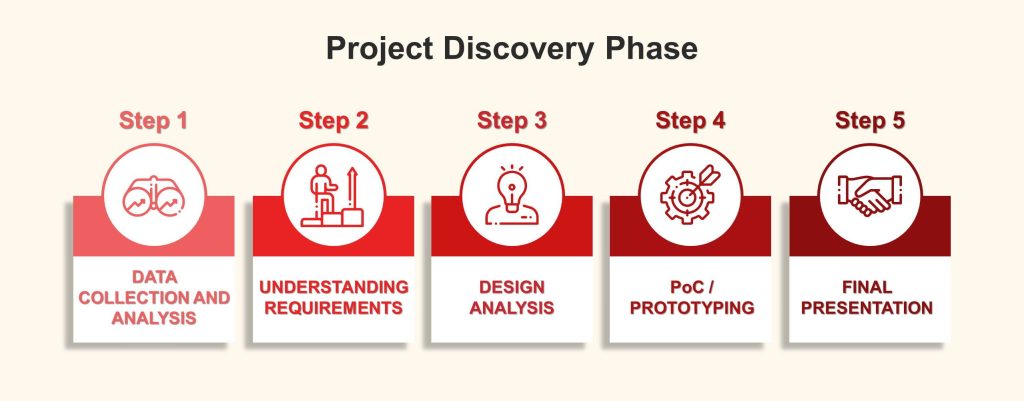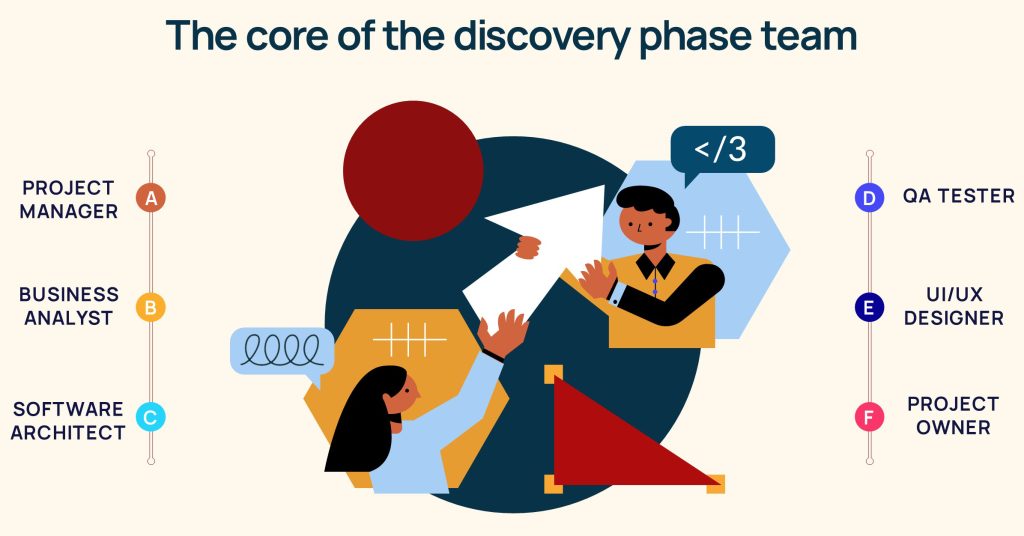Have a brilliant app idea that is going to transform your business? Great! But before deep diving into design and development, it is important to take a big breath and map out some sort of plan to see what it will take you. In software development, this step is often called a discovery phase, and in this post, we will tell you how it helps save time and money and avoid painful mistakes while creating top-notch products.
The main goal of the project discovery phase in software development
The software discovery phase is a preparatory stage of software development aimed to clarify project requirements, goals, and limitations and ensure that all stakeholders are on the same page. This helps avoid unrealistic expectations and possible misunderstandings down the road that would otherwise lead to missed deadlines, bloated budgets, and even complete project failure.
The software development discovery phase helps mitigate the possible failure risks through
- analyzing the end-user profile, competition, scope of issues to be solved, and priorities
- exploring the best practices in the industry and defining the tech stack required
- visualizing the end product design
- estimating timeframes and costs and creating the implementation roadmap
Project discovery phase: step-by-step creation
The duration of the discovery phase in software development varies from several days to several weeks, depending on the project’s complexity. At ABNK, we usually break down the discovery phase project plan into five simple steps

Step 1. Data collection and analysis
We study the client’s market and gather insights about the end-user, competition, brand specifics, industry trends, and gaps, and everything that helps us make this project more targeted and attractive.
Step 2. Understanding the requirements
The desired outcome for business is our top priority. At this stage of the software discovery phase, we collaborate with the client’s marketing, design, and development teams to discuss their goals, budget, technical frameworks, deadlines, prioritized features, etc.
Step 3. Design analysis
Through workshops, we develop design recommendations to align business goals and tech solutions with end-user needs. This step helps lay the foundation for creating user-centered design at later development stages.
Step 4. PoC/Prototyping
At this stage, we create simplified clickable UI/UX prototypes with minimal functionality that help our team prove design assumptions, run first feasibility tests, and collect client feedback. Proof of Concept in combination with a prototype will help your stakeholders to see the technical and financial feasibility of the original idea and show how their future users will be interacting with their product.
Step 5. Final presentation
At the final stage of the discovery phase in software development, we provide the business with a package of valuable insights that guarantee a sound transition to further development stages:
- Software Requirements Specification (defines architecture, feature set, tech stack, etc.)
- Marketing reports and user study materials (user persona, user stories, etc.)
- Budget estimate and detailed roadmap (implementation plan with the milestones and deadlines described)
- Risk and scalability assessment
What types of businesses especially need the discovery phase in a project?
The software discovery phase gives businesses access to advanced technical expertise, which is especially beneficial for startups/businesses that:
- have nothing but a basic idea of the future project and do not know how to proceed with it;
- don’t have in-house development/design teams;
- lack experience in building complex user-friendly projects from scratch, or
- doubt their expertise in some development stages (scalability, UX/UI design, integration with available tools/systems, etc.)
Who takes part in the software development discovery phase?
The core of the discovery phase team should consist of a project manager, business analyst, software architect, QA tester, and of course, a project owner. Ideally, to ensure broadmindedness, the project discovery phase in software development should involve as many participants as possible. So businesses should feel free to bring in their in-house UX designers, developers, as well as industry experts, and end-users.

What issues can you avoid with the project discovery phase?
A solid discovery phase project plan helps mitigate risks associated with the development process going uncontrolled. These risks may include:
- a bloated budget because of constant changes in development directions;
- bad design that requires endless alterations;
- constantly extended deadlines and, as a result, a delayed launch;
- sub-par project quality that does not meet the expectations of your business;
- wasting money on features no one needs due to a poor understanding of actual user demands
The list can be continued indefinitely because every business has its unique sensitive points poor planning can jeopardize. The discovery phase is a critical part of any software development process that helps ensure the project unfolds smoothly and according to your paramount user and business needs.
We at ABNK always advise all our clients to start the





